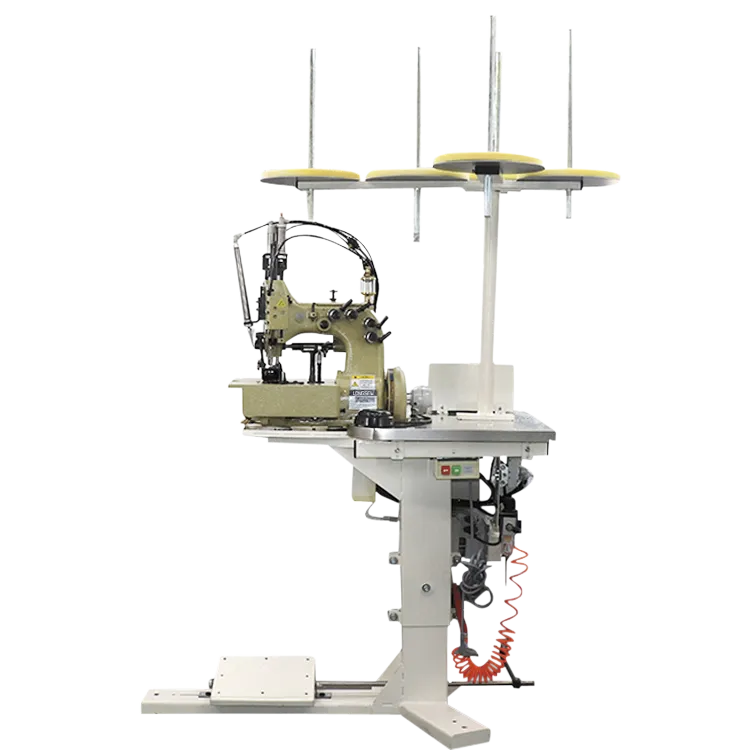Ensuring Safety Standards in FIBC Sewing Techniques for Enhanced Product Reliability and Performance
The Importance of Safety Sewing in FIBC Production
Flexible Intermediate Bulk Containers (FIBCs), commonly referred to as bulk bags, are vital in various industries for the transportation and storage of bulk materials. These bags, designed for heavy-duty use, have revolutionized how we handle bulk goods, offering a cost-effective and efficient solution for transporting powders, grains, and other granular materials. However, the safety and reliability of FIBCs heavily rely on the quality of their sewing. This article delves into the significance of safety sewing in the production of FIBCs, emphasizing its impact on performance and safety.
Understanding Safety Sewing Safety sewing in FIBC production refers to the meticulous craftsmanship that ensures seams are secure and capable of withstanding the considerable forces exerted during handling, transport, and storage. Given that FIBCs may be filled with heavy materials, the seams must be robust enough to prevent failures such as tearing or breakage.
The sewing process involves using specialized equipment and techniques tailored specifically for the strength and durability required in FIBCs. The choice of thread, sewing patterns, and machine settings plays a crucial role in determining the overall quality of the seam. High-quality polyester threads, for instance, are often preferred for their excellent tensile strength and resistance to abrasion and UV light.
The Importance of Safety Sewing in FIBC Production
2. Thread Quality The quality of the thread used is equally crucial. Threads that are UV-resistant and water-repellent can significantly enhance the longevity of the FIBC, making them suitable for outdoor applications.
fibc safety sewing

3. Sewing Techniques Advanced sewing techniques, like double stitching or reinforced seams, can drastically improve the safety and functionality of FIBCs. Reinforced sewing involves an additional line of stitching along the seam, which protects against potential failures, especially under heavy loads.
4. Quality Control Implementing strict quality control measures throughout the sewing process is essential. Regular inspections and testing of the sewn seams for strength and durability can help identify potential weaknesses before the bags are distributed in the market.
Impact on Safety and Performance The relevance of safety sewing cannot be overstated. A poorly sewn FIBC can lead to catastrophic failures, resulting in material loss, safety hazards for handling personnel, and even legal ramifications for manufacturers. On the other hand, well-constructed FIBCs ensure that materials are stored and transported safely, with minimal risk of failure.
Furthermore, the integrity of the seams affects the overall performance of the FIBC. Bags that are stitched to high safety standards present superior resistance to wear and tear, ultimately resulting in longer service life. This not only benefits manufacturers in terms of reduced costs associated with bag replacement but also enhances customer satisfaction.
Conclusion In conclusion, safety sewing in FIBC production plays a critical role in ensuring the reliability and durability of these essential bulk containers. By prioritizing high-quality sewing techniques, appropriate materials, and stringent quality control measures, manufacturers can enhance the safety and efficiency of FIBCs. As industries continue to rely on bulk bags for their operations, understanding and implementing advanced safety sewing standards will be paramount in safeguarding both materials and personnel during transit and storage.
-
Leather Sewing Machine: The Industrial Standard for Tough MaterialsNewsJul.18,2025
-
Sail Making Machine: Heavy-Duty Stitching for Industrial and Marine NeedsNewsJul.18,2025
-
Sling Sewing Machine: The Backbone of Heavy-Duty FabricationNewsJul.18,2025
-
Leather Sewing Machine: Precision for Heavy-Duty StitchingNewsJul.18,2025
-
Big Bag Sewing Machine: Powering the Future of Bulk PackagingNewsJul.18,2025
-
FIBC Sewing Machine: Essential Equipment for Bulk Bag ProductionNewsJul.18,2025
-
Heavy Duty Leather Sewing Machine: A Must-Have for Professional LeatherworkNewsMay.28,2025





























